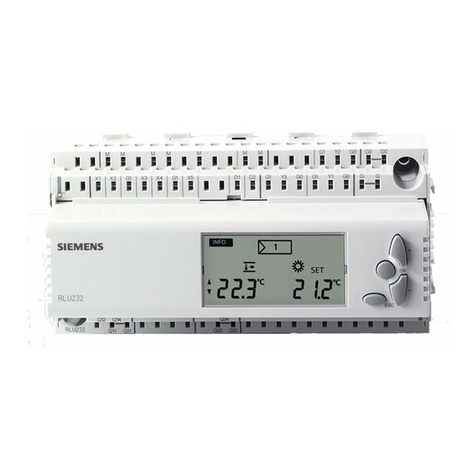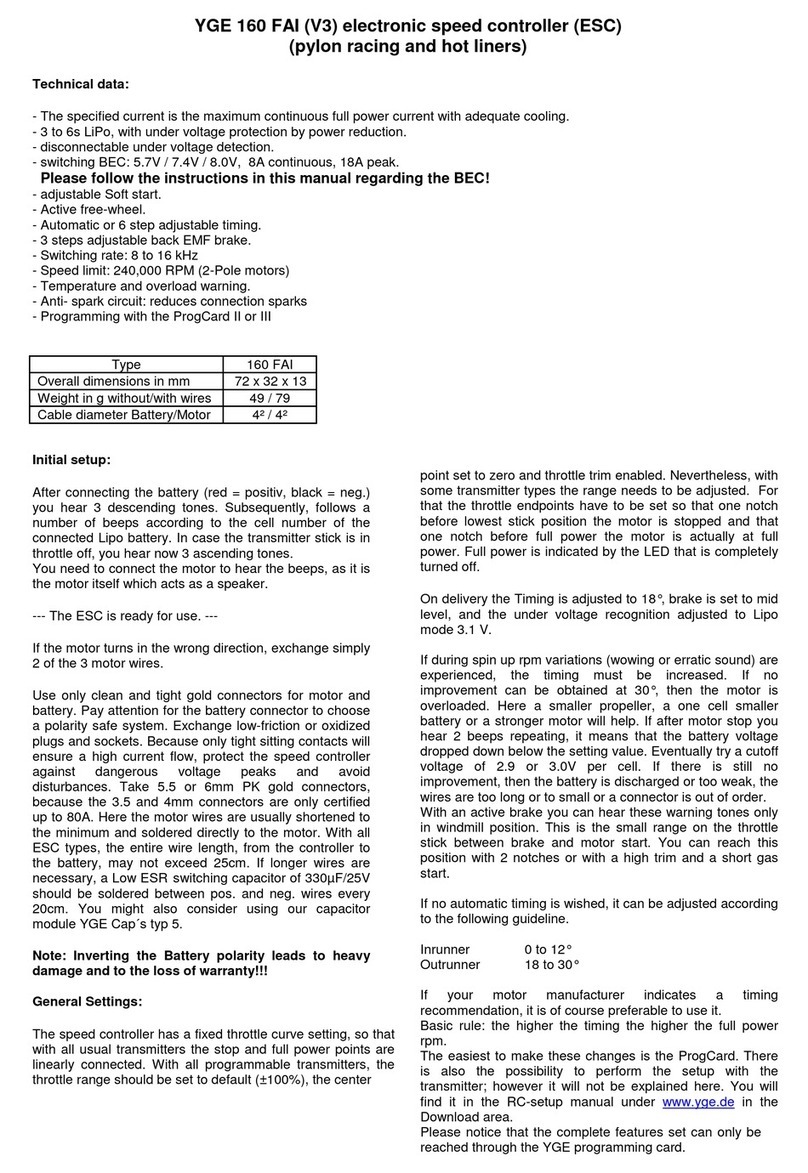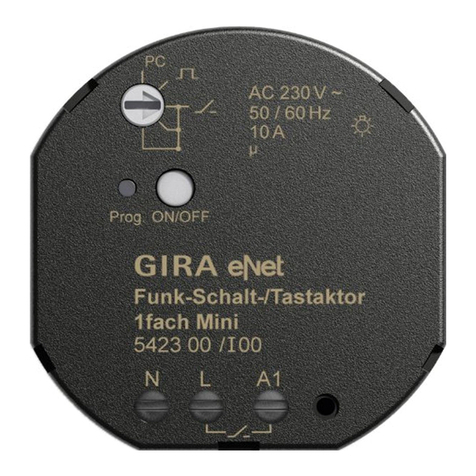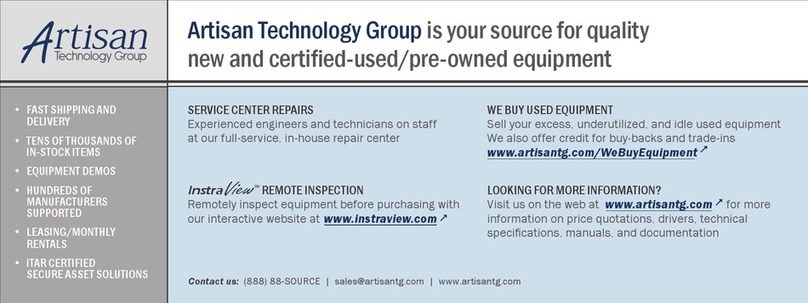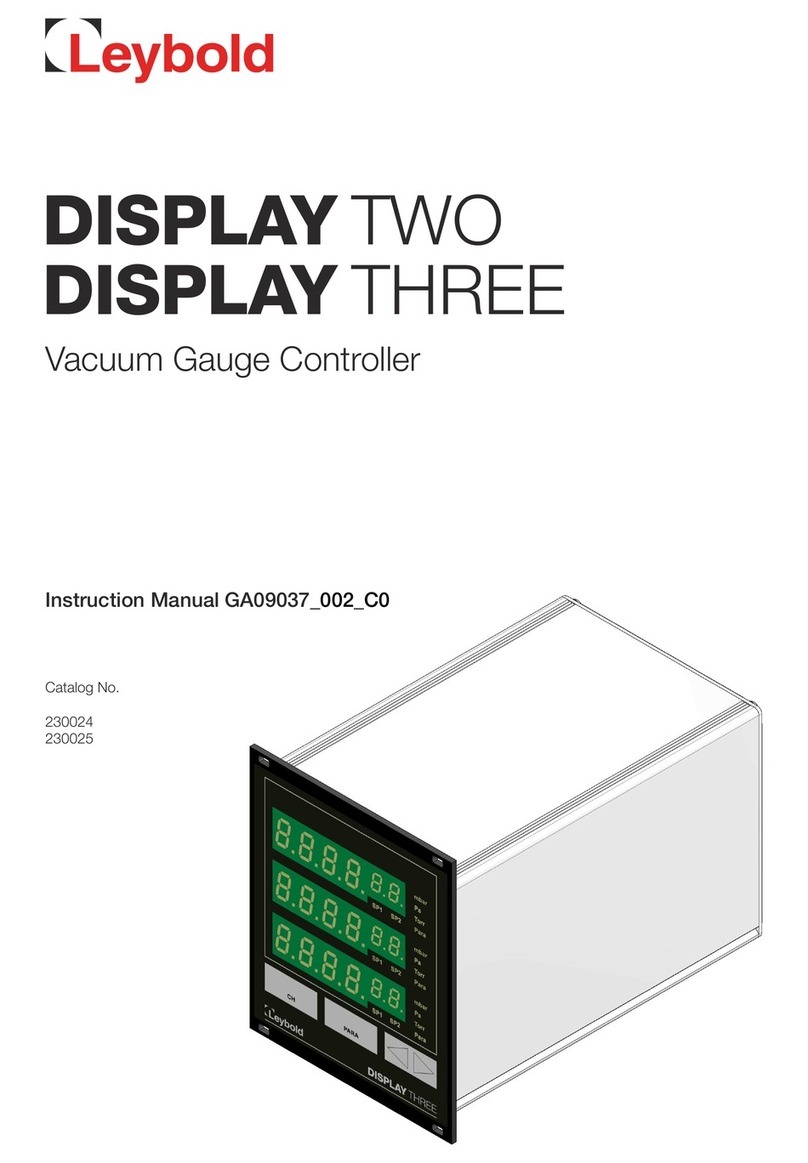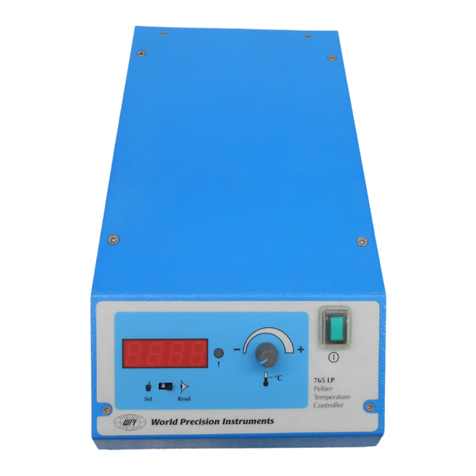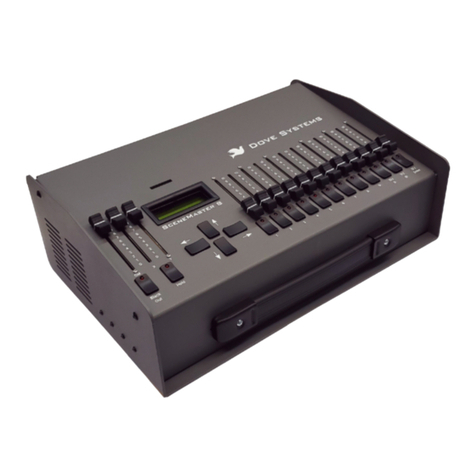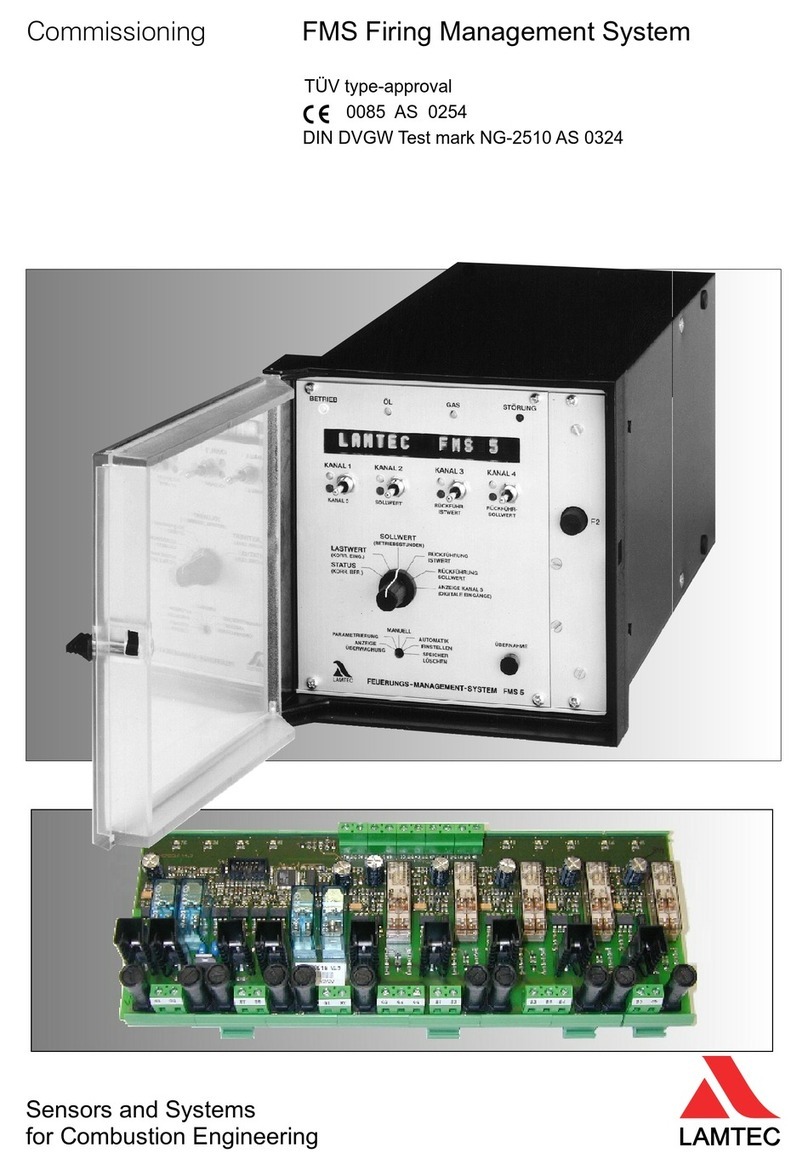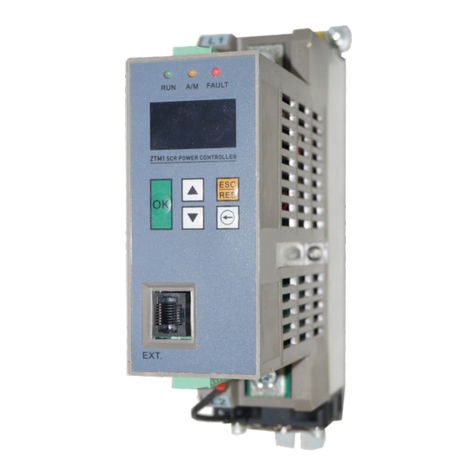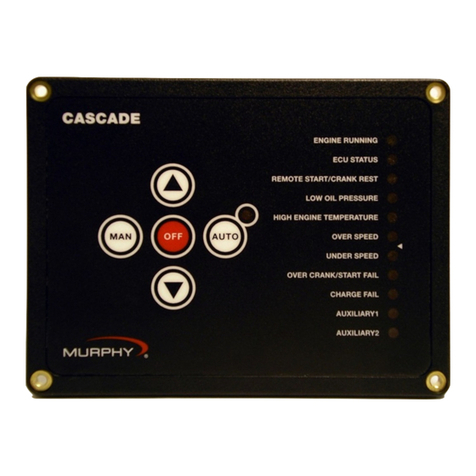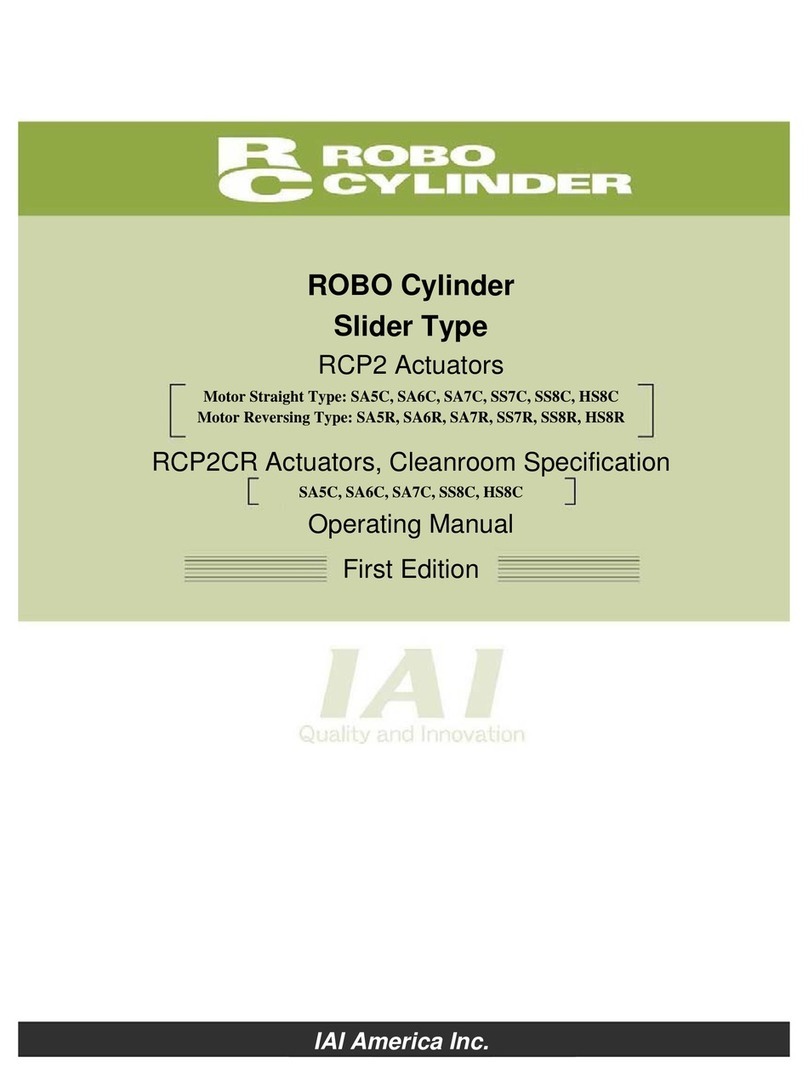Energy Master HHPM SERIES Manual

AIR-SOURCE, HOT WATER HEAT PUMP
CONTROLLER V.2-SEP 2012
HHPM SERIES
Installation, Operation, Maintenance,
Service Manuals
Energy Master Co., Ltd
450/10 Soi Phaholyothin 35, Phaholyothin Rd., Ladyao, Chatuchak,
Bangkok 10900
Tel.: 0 2512 3471 Fax.: 0 2512 3470
E-mail: info@energymaster.co.th Website: www.energymaster.co.th

Manual Heat Pump Model HHPM-V.2- SEP 2012 1
Contents
TO CUSTOMER...................................................................................................................................................3
1. INTRODUCTION.............................................................................................................................................4
1.1.General Concept .....................................................................................................................................4
2. GENERAL .......................................................................................................................................................5
2.1. Applications..........................................................................................................................................5
2.2 Operating limits .......................................................................................................................................5
2.3 Water Quality ...........................................................................................................................................6
2.4 Equipment Sizing.....................................................................................................................................6
2.5 Duct Sizing...............................................................................................................................................7
3.INSTALLATION................................................................................................................................................7
3.1. Serial Number Nomenclature.................................................................................................................7
3.2. Inspection ...............................................................................................................................................7
3.3 Specifications: .........................................................................................................................................7
3.5 Electrical ................................................................................................................................................10
3.6 Condensate Drain.................................................................................................................................16
3.7 Tank Temperature Sensor....................................................................................................................16
3.8 Ducting ..................................................................................................................................................17
4. Heat Pump Controller...................................................................................................................................19
4.1 Homepage.............................................................................................................................................19
4.2 Status Display Page ..............................................................................................................................20
4.3 User Setting Page..................................................................................................................................21
4.4 Time Set Page .......................................................................................................................................22
4.5 Alarm Status Page .................................................................................................................................24
5. OPERATION.................................................................................................................................................26
5.1 Preliminary checking .............................................................................................................................26
5.2. Startup ..................................................................................................................................................26
5.3 Normal Operation ..................................................................................................................................27
5.4 Thermostatic Expansion Valve ..............................................................................................................28
5.5. Time Delay Relay..................................................................................................................................30
5.6. Heat Pump Safety.................................................................................................................................30
5.7. Temperature control .............................................................................................................................30

Manual Heat Pump Model HHPM-V.2- SEP 2012 2
6. MAINTENANCE............................................................................................................................................31
7. SERVICE ......................................................................................................................................................32
7.1.Service Tools: ........................................................................................................................................32
7.2.Caution for service:................................................................................................................................32
7.3. Leak Repair/Brazing.............................................................................................................................33
7.4.Removal of existing refrigerant..............................................................................................................33
7.5. Removal of defective components.......................................................................................................33
7.6.Installation of new components.............................................................................................................34
7.7. Leak test ..............................................................................................................................................35
7.8. Evacuation ............................................................................................................................................35
7.9. Refrigerant charging.............................................................................................................................36
7.10 Scale removal .....................................................................................................................................36
8. FORMS .........................................................................................................................................................39
8.1.Test Form...............................................................................................................................................39
8.2. Warranty Registration Card .................................................................................................................40

Manual Heat Pump Model HHPM-V.2- SEP 2012 3
TO CUSTOMER
•Before using the product. Strongly advised to read this manual carefully before attempting to use
this machine and keep it safe for future reference.
•The installation and repair must be done by the qualified technician who is familiar with national
and local safety regulation. To prevent injury, death, or property damage, please read and follow
all instruction and warnings in this manual. The best preventive action is that install and operation
properly and maintain periodically.
•The manual is accuracy when published .Because the machine is improved continually , we
reserved the right of modifying the technical data and don’t take the responsibility.
•Although the product is packed, there is still exist the transportation risk. If you found the machine
is damaged during the transportation. Please notify the carrier by written document and
acknowledge by the carrier. You must keep the delivery document with the carrier signature.
•If you have any questions or need assistance, please contact with distributor or Energy Master
Company .
•Please meet the requirements for electric source capacity and electric power of the machine . For
requirements details please check the nameplate on machine or the installation instruction manual.
•Electrical Grounding must be supplied congruent to national and local code, and it is prohibit
using the machine without the electrical grounding. Please do not connect the grounding line to
running water pipe.
•Refer to electric circuit diagram for installing.
•Be careful not to insert any tools or sundries into the unit which could touch the fan and caused
unit damage or injury. (Children are especially forbidden.).
•An unqualified technician is not permitted to adjust the switches, valves and controllers inside the
unit.
•The user must use the domestic water and can not use the industrial water , pool water or sea
water for heating , otherwise damage the machine.

Manual Heat Pump Model HHPM-V.2- SEP 2012 4
1. INTRODUCTION
1.1.General Concept
The heat pump water heater uses the same operating principle as an air-conditioner or domestic
refrigerator but use the hot side not the cold side. The heat pump gathers heat from the surrounding air,
and through the refrigeration cycle, deposits the heat into water at a useable temperature. Air-source heat
is free energy so that heat pump offer the commercial hot water user a highly energy efficient means of
generating potable hot water. This principle of moving heat with a heat pump, rather than generating it by
burning fossil fuel (i.e. natural gas), or electric heater, makes water heating with heat pumps the best
choice for conserving fossil fuels. Depending on the temperature of the air supplied to the heat pump, water
can be heated using only fraction of the energy required by electric heater or gas.
Since the heat pump uses the same principle as an air-conditioner, it produces by-product cooled
air as it makes hot water. This free cooled air can be used to supplement the existing air-conditioning
system, to be the fresh air for air-conditioning room, to provide spot cooling for hot work areas or to ventilate
and cooling kitchen or machine room.
Hot water generates from heat pump is the most economic sources. All parties concerned the
operation of the heat pump should understand throughly the basic principle, installation, inspection
methods, maintenance, and service procedures, in order to operate the heat pump at it’s best efficiency
and so the best profit to the owner. This manual will educate all party to know all information needed. For
further information, please contact Energy Master Co.,Ltd. or sale representative.

Manual Heat Pump Model HHPM-V.2- SEP 2012 5
2. GENERAL
2.1. Applications
Heat pump can be successfully applied where large amounts of hot water is needed such as
hotels, hospital, massage ,and also in the industry. The best suitable application is for supplying hot water
in commercial facilities where demands for hot water and space cooling are concurrent.
Energy Master Co.,Ltd. can supply heat pump for each specific application. Two basic types of
applications are as follows :
1. Hot Water Heating Only. This applications, ie. Resorts, Apartments, Condominiums, hot water
is made while the cold side is not used because of building layout and other reasons. The hot
water systems are simple to design and control, and even no cooled air effect will be taken as
added savings in the economic payback analysis, the heating efficiency of the heat pump still
pay back.
2. Hot Water Heating with cooled air Benefit.This application, such as Restaurants, Nursing
Homes. Laundries, Hospitals. Kitchens, Food Processing Plants, Photographic Processing
Plants, etc., the cool air produced by the heat pump is used to cool an occupied space while
energy efficient hot water is being made. When the cooled air by-product is used, the
calculation of both the hot water and cooled air loads is very important. The profiles of both
loads thoughout the day shall be calculated. There are two possible cases when using the
cooled air :
a) The Hot Water Load exceeds the Cooled Air Load Heat Pump shall be sized for the
cooled air load and collect hot water in a hot water storage tank to feed the main water hot
water system. Use a room thermostat in series with the hot water storage tank aquastat to
control the Heat Pump to conrol the space temperature.
b) The Cooled Air Load exceeds the Hot Water Load. Heat Pump can be sized by two
strategies.
Strategy 1.) Size the Heat Pump for the Hot Water Load and assist the cooled air
system by used the cool air for spot cooling, or
Strategy 2.) Size the Heat Pump to match the cooled air load and incorporate the
Remote Heat Rejection option such as cooling tower. In both of these cases the hot water is
typically stored in a hot water storage tank.
2.2 Operating limits
The air source heat pump capacity is affected by the temperature of the entering air. As entering

Manual Heat Pump Model HHPM-V.2- SEP 2012 6
air temperature falls, so does heat pump capacity and efficiency. The minimum entering air temperature
should not lower than 15C as the heat pump capacity is less than half of the rating.
The maximum leaving water temperature that can be produced by any heat pump water heater is
determined by the maximum allowable pressure of the refrigerant. The heat pump uses environmentaily
friendly R134a refrigerant which operates at lower pressures than R22. Heat Pump can produce leaving hot
water temperatures up to 65C.
Notice that average hot water storage tank temperature sensed by the aquastat bulb will be lower
than the water temperature leaving the heat pump. This means that the practical aquastat setpoint will be
between 55 and 60C.
2.3 Water Quality
The method of describing water quality is Total Dissolved Solids, TDS, in ppm. In broad terms:
a) 100 ppm or less TDS = good Quality drinking water
b) 500 ppm TDS = marginally drinkable water
c) 1200 ppm TDS = considered "brackish" water
The Heat Pump Water Heater (condensers) are stainless steel plate type heat exchanger to
transfer heat from the condensing R134a refrigerant to water. The Heat Pump with stainless steel
condensers should operate acceptably with water having up to 1200 ppm TDS provided no deposit clog in
the channel between plates.
Cleaning the condensers is necessary when scale is found. Scale removal shall be done through
the drain and vent connection installed outside of the unit. Flushing with water before get back to operation
to avoid chemical drain into the hot water system.
2.4 Equipment Sizing
Proper selection and sizing of the heat pumps is determined by several factors including:
Size of the storage tank.
Supply water temperature.
Hot water temperature(tank).
Total daily volume of hot water.
Usage pattern (load profile).
Inlet air temperature and humidity.
Contact Energy Master Co., Ltd or representative to correctly size the heat pumps and storage

Manual Heat Pump Model HHPM-V.2- SEP 2012 7
tanks for a given application.
2.5 Duct Sizing
Heat pump is provided with forward curved, double width, double inlet, centrifugal fan, belt drive
with motor. The unit can supplied cooled air to 30 metres distance through 1 Pa/m resistance duct work by
the supplied standard fan drive.
Contact Energy Master Co., Ltd or sale representative for longer distance duct informations.
3.INSTALLATION
3.1. Serial Number Nomenclature
Fig.1 Serial Number Nomenclature
HHPM XX- XX-XX-XXX
3.2. Inspection
Upon receipt of equipment, inspect for damage of the packing. Any damage found should be noted
on delivery receipt. After unpacking, inspect for shortage or damage, call the sole representative for a
concealed damage or shortage inspection. The inspector will need related paperwork, delivery receipt, and
any information indicating his liability for the damage.
Also check the nameplate of unit for model and electrical characteristics to be certain that unit is
compatible with the power supply.
3.3 Specifications:
Followings are general heat pump unit specifications for reference:
Refrigerant: R134a
Refrigerant Charge (Precharge)
UNIT NUMBER
PRODUCTION MONTH
PRODUCTION YEAR
HEATING CAPACITY(kW)
COMPANY CODE

Manual Heat Pump Model HHPM-V.2- SEP 2012 8
HHPM18 : 1.8 kgs. HHPM25 : 2.6 kgs.
HHPM35 : 3.2 kgs. .HHPM50 : 4.8 kgs. HHPM65 : 8.0 kgs.
Refrigerant Oil: Polyol Ester (POE)
High Pressure Cutout: 2455 kPa (356 psig) for standard model
Low Pressure Cutout: 193kPa (28 psig)
Minimum Ambient Air Temperature: 10 oC
Table 1. Heat Pump Specifications
MODEL HHPM18 HHPM25 HHPM35 HHPM50 HHPM65
HEATING CAPACITY kW 18.4
25.0
35.4
50.23 65.7
COOLING CAPACITY kW (Btu
/
h) 15.1 (51,771)
21.3 (73,029)
30.96(106,148) 41.23 (141,360)
55.7(190,903)
HOT WATER RECOVERY RATE
Lph 527
714
1,010
1,439 1,877
MAXIMUM HOT WATER TEMP. OC 70
70
70
70 70
AIR FLOW RATE m3
/
h (cfm) 2,890 (1,700)
4,250 (2,500)
6,801 (4,000)
8,500 (5,000) 10,194 (6,000)
COMPRESSOR TYPE SCROLL
SCROLL
SCROLL
SCROLL SCROLL
REFRIGERATION R-134a
R-134a
R-134a
R-134a R-134a
ELECTRICAL DATA V
/
Ph
/
Hz 380/3/50
380/3/50
380/3/50
380/3/50 380/3/50
POWER
CONSUMPTION TOTAL kW 4.2 5.6 8.4 12.5 15.3
(At Recovery Rate)
RLA @ RECOVERY RATE Amp 8.2
10.9
16.2
24.8 30.1
FLA CURRENT Amp 12.1
14.1
19.3
31.2 36.6
CASING MATERIAL SUS304
SUS304
SUS304
SUS304 SUS304
DIMENSION (W X D X H) mm. 1040x840x605
1175x940x655
1350x1100x900 1650x1160x900
1940x1150x1150
WATER INLET inch 1"
1"
1-1/4"
1-1/2" 1-1/2"
WATER OUTLET inch
1"
1"
1-1/4"
1-1/2"
1-1/2"
CONDENSATED DRAIN inch
3/4"
3/4"
1"
1-1/4" 1-1/4"
WEIGHT kg. 186
226
312
420 671
Note : Data can be changed without notice.

Manual Heat Pump Model HHPM-V.2- SEP 2012 9
Figure 2. Heat Pump Dimensional Drawing
HHMP18 HHMP25
HHMP35
HHMP50
HHMP65
A 1040 1175
1350
1650
1940
B 630 645
900
900
1150
C 190 210
210
250
345
D 685 795
890
1120
1325
E 165 170
250
280
270
F 840 940
1100
1160
1150
G 280 300
470
455
500
H 150 150
180
170
190
I 225 230
215
215
280
J 290 360
450
505
570
K 185 195
240
305
300
L 330 360
450
505
570
M 165 170
250
280
270
N 685 795
890
1120
1325
O 190 210
210
250
345
Unit : mm.

Manual Heat Pump Model HHPM-V.2- SEP 2012 10
3.4. Mounting
Rigging: Units are crated and shipped in an upright position. After uncrating, use of nylon slings
are recommended for lifting the unit.
Compressor The hermetic compressor in the heat pump is mounted on four rubber mounts for
vibration isolation. No adjustments to the four (4) bolts in the compressor mounting feet are necessary.
Curb Mount: When mounting the unit on a curb or on structural beams, isolate the unit from the
building with rubber pads or vibration isolation springs 25 mm. deflection. If spring is installed, adjust each
of (4) springs so that the unit is level.
Ceiling Mount:When suspending the unit from a ceiling or from overhead beams. The unit’s leg shall
be placed and bolted on the 100mm channels, steel rod shall be isolated from anchor with rubber.
Location:Position the unit so that the evaporator air inlet and fan discharge outlet are unrestricted, and so
that the unit can be easily serviced through access panels. Minimum distance from the unit to any wall is
600mm. and 1,000 mm. on air discharge side. Units top cover shall have a minimum free distance of
800mm. for serviced.
3.5 Electrical
Control wiring is completely wired from the the factory. External wiring for control shall enter the
cabinet at the bottom of the control board side. The heat pump control circuit will require to install
temperature sensor at hot water storage tank. Refer to the wiring diagram attached to the unit.
Incoming line conductors must be sized according to national and local codes for the voltage, and
amperage shown on the unit nameplate. Electrical wire for tank sensor must be a minimum of 0.5sq.mm.

Manual Heat Pump Model HHPM-V.2- SEP 2012 11
Use only copper conductors for all field wiring.
External Supply should have isolating switch or breaker for unit service and circuit protection.
Supply wiring enter the cabinet at the bottom of the control board side . The terminal block in the unit
control panel is provided for incoming line conductors. Refer to the wiring diagram attached to the unit.
Figure 3 Typical wiring diagram for standard unit

Manual Heat Pump Model HHPM-V.2- SEP 2012 12

Manual Heat Pump Model HHPM-V.2- SEP 2012 13

Manual Heat Pump Model HHPM-V.2- SEP 2012 14

Manual Heat Pump Model HHPM-V.2- SEP 2012 15

Manual Heat Pump Model HHPM-V.2- SEP 2012 16
3.6 Condensate Drain
Heat pump draw air into the evaporator to absorb heat. The air is dehumidified producing
condensate on the surface of the evaporator coil. This condensate is collected in the coil drain pan and
must be piped away to a suitable drain system. Drain pipe connection 25 MM. is provided for draining the
condensate from the unit. This connection is located on the underside of the heat pump base. Pipe the-
condensate drain with a "P" trap to prevent drain system air from being drawn back into the unit. Figure 8
shows the construction of "P" trap with a cleanout feature constructed from all PVC fittings.
Figure 7. PVC "P" trap
3.7 Tank Temperature Sensor
Heat pump water heater is controlled by a tank temperature sensor which senses storage tank
temperature and turns the heat pump on and off to maintain a preset temperature. The tank temperature
sensor will be installed and wired by the job contractor.
There are two adjustments, Setpoint and Differential, which must be set properly by the installer for
the water heating system to operate correctly.
The Setpoint is the temperature at which stop the heat pump.
The Differential is the temperature difference between the Setpoint and the temperature at which the
heat pump starts.
For example, Tank temperature with 60 oC Setpoint and 5 oC Differential settings would start
the heat pump when tank temperature falls to 60 - 5 = 55 oC, and stop the heat pump when
tank temperature is brought up to 60 oC.
It is essential to set the Differential large enough so that heat pump runs for at least 10 minutes

Manual Heat Pump Model HHPM-V.2- SEP 2012 17
once it starts. This allows oil to circulate properly, compressor windings to cool. Expansion Valve to
modulate, etc. The minimum Differential setting to produce 10 minutes of running time is a function of
heating capacity and storage tank volume. Following table shows the required minimum setting for single
heat pump installation of various storage tank size.
Table 4. Minimum tank temperature differential temperature setting for single heat pump
Hot Water Storage Tank size (litre)
500 600 700 800 900 1000 1100 1200
Differential temp. setting (oC) 7.5 6 5.5 4.5 4 3.7 3.3 3
3.8 Ducting
Heat Pump Unit is provided with double width, double inlet, forward curved, centrifugal fan,
capable of delivering cold air.
When ductwork is connected to convey by-product cooled air from heat pump unit to the required
area, ductwork shall be designed at 1 Pascal/metre friction loss ( 0.12 in.wc./ 100 ft) and duct transition
shall be gradually expanded to the duct with 0.6 metre transition duct length . The external static pressure
shall be 37 Pascal (0.15 in.wc.), which is equivalent to the 38 m. duct distance. For longer distance duct,
fan speed and motor rating may be changed. Contact Energy Master Co., Ltd. or representative for further
information.
Air delivery is essential for heat pump unit, to maintain the heat input at the evaporator and the
unit’s performance. The cooled air destination shall be well ventilated, no restriction that will reduce the
cooled air flow rate from the heat pump.
Insulation of duct systems is important for two reasons:
a) To minimize heat gain to the cool air coming from the heat pump.
b) To prevent moisture from condensing on the exterior of duct surfaces.
Generally, 25.4 mm thick fiberglass insulation with a good vapor Barrier is adequate. A vapor
barrier such as metal foil, PVC, or a metal sheath on the exterior of the insulation is important to prevent the
insulation from becoming water soaked when duct runs pass through warm, humid spaces.

Manual Heat Pump Model HHPM-V.2- SEP 2012 18
Figure 8. Recommended Duct Transition Size For Installation
Model Recommend Minimum Square Duct Size for 1 Unit
HHPM18 400
HHPM25 500
HHPM35 650
HHPM65 800
Unit : mm.

Manual Heat Pump Model HHPM-V.2- SEP 2012 19
4. Heat Pump Controller
4.1 Homepage
Button Instruction
BUTTON FUNCTION
At all page except homepage , press this button back to previous page or home page.
At homepage , press this button to turn on and off.
At homepage , press this alarm status.
At homepage , press this button to see operating status.
At homepage , press this button to enter setting parameter.
TANK025oCCOND.218psi
OUTL.060oCEVAP.049psi
UNITSTATUSON
ON/OFFAUTONORMAL
TANK
TEMPERATUR
HOT WATER
OUT LET
TEMPERATURE
CONDENSING
PRESSURE
EVAPORATING
PRESSURE
UNIT STATUS
ON / OFF
STATUS
NORMAL / ALARM
Table of contents
Popular Controllers manuals by other brands

Siemens
Siemens SIPART DR22 Assembly and Installation Information
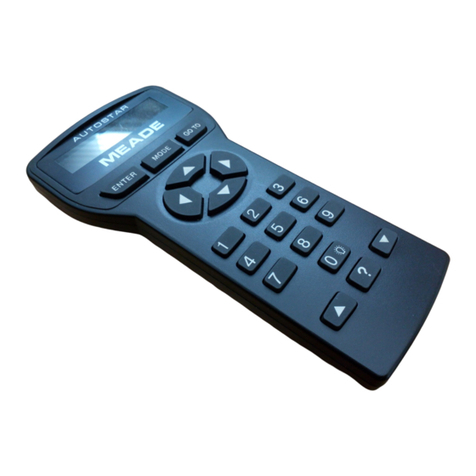
Meade
Meade Autostar user guide
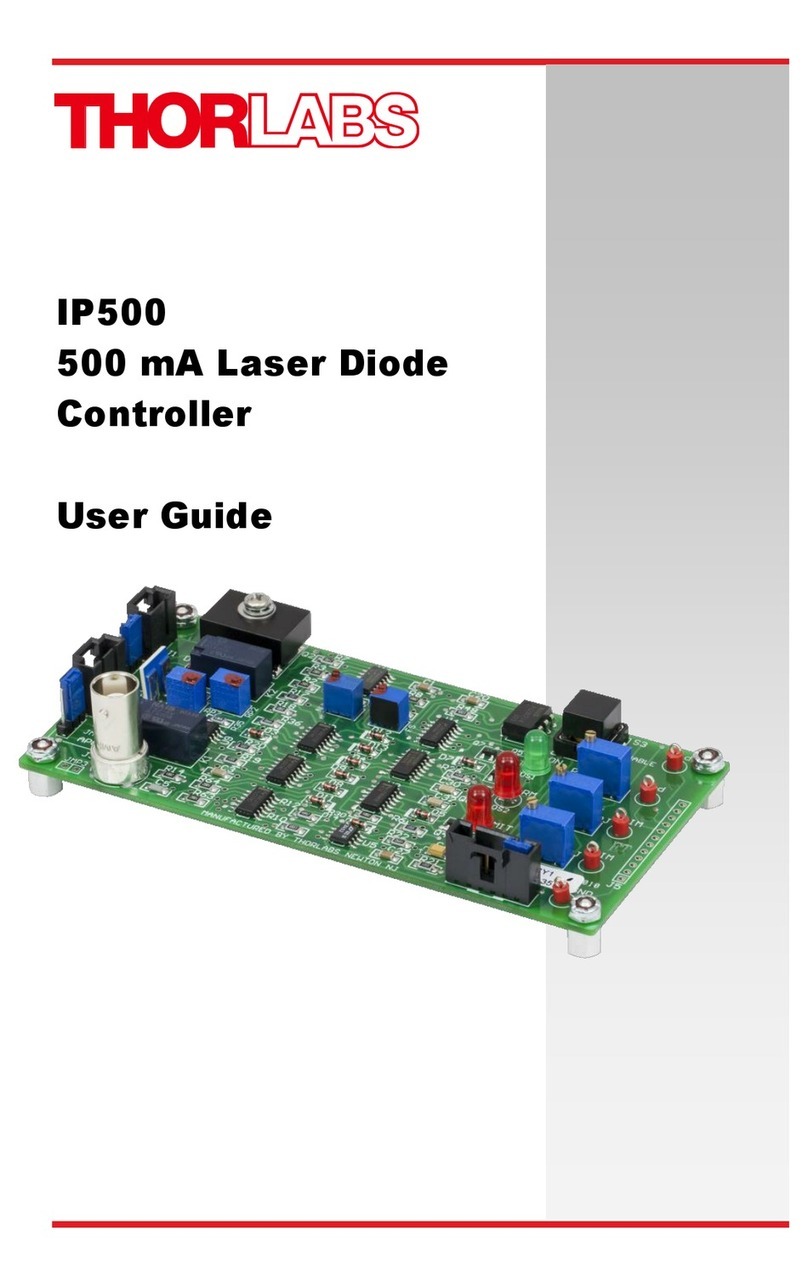
THORLABS
THORLABS IP500 user guide
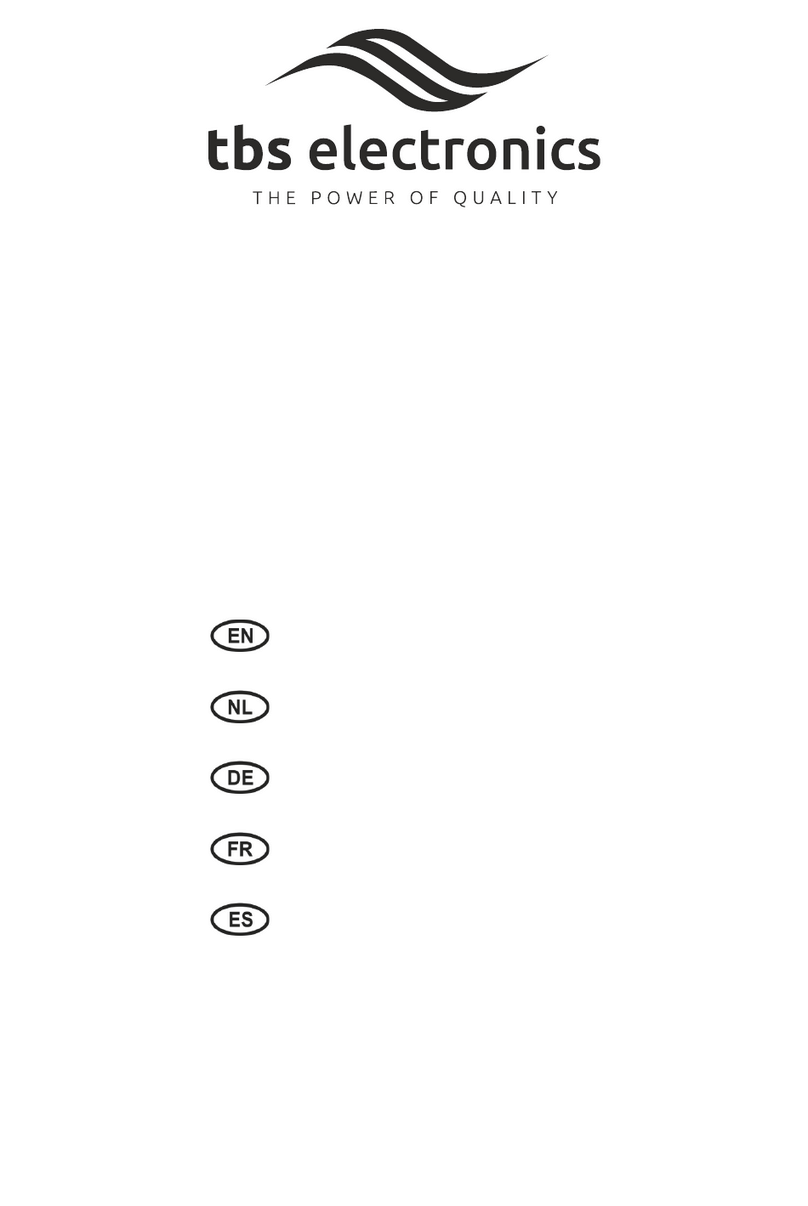
tbs electronics
tbs electronics Omnicharge Solar OCS 150-60 owner's manual
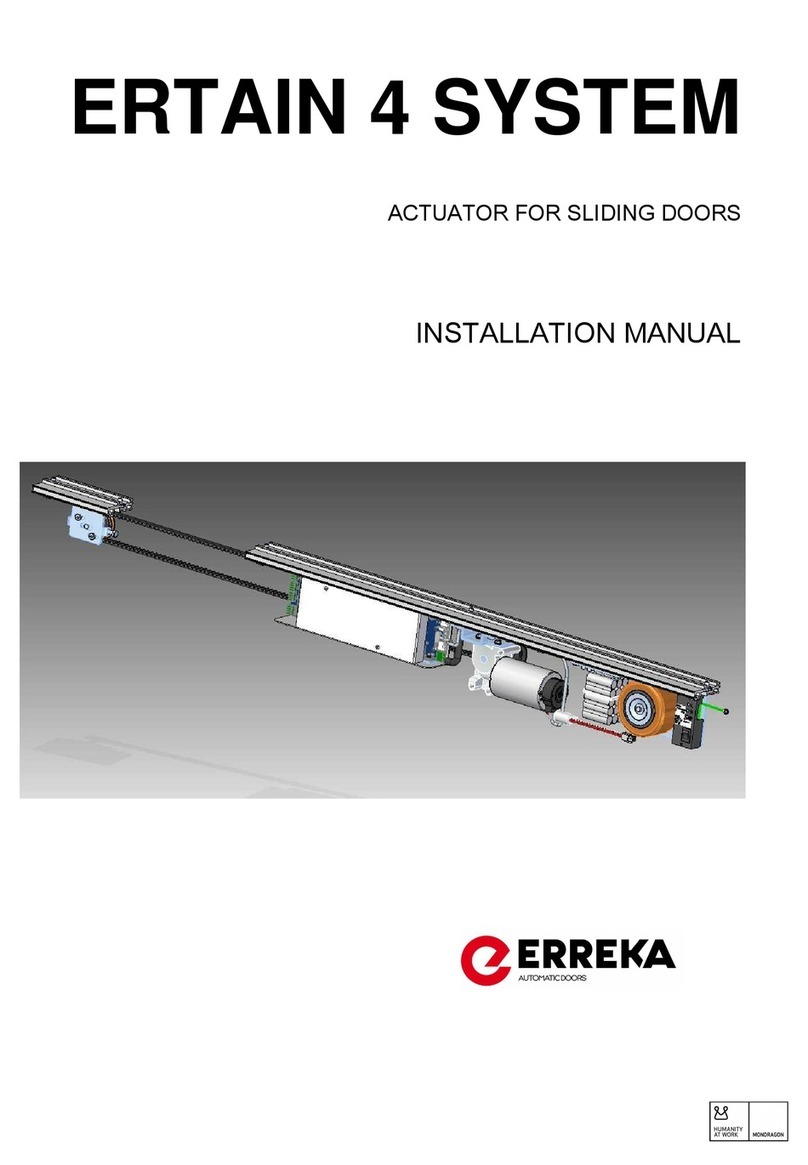
Erreka
Erreka ERTAIN 4 SYSTEM installation manual

LOVATO ELECTRIC
LOVATO ELECTRIC ATL600 instruction manual
